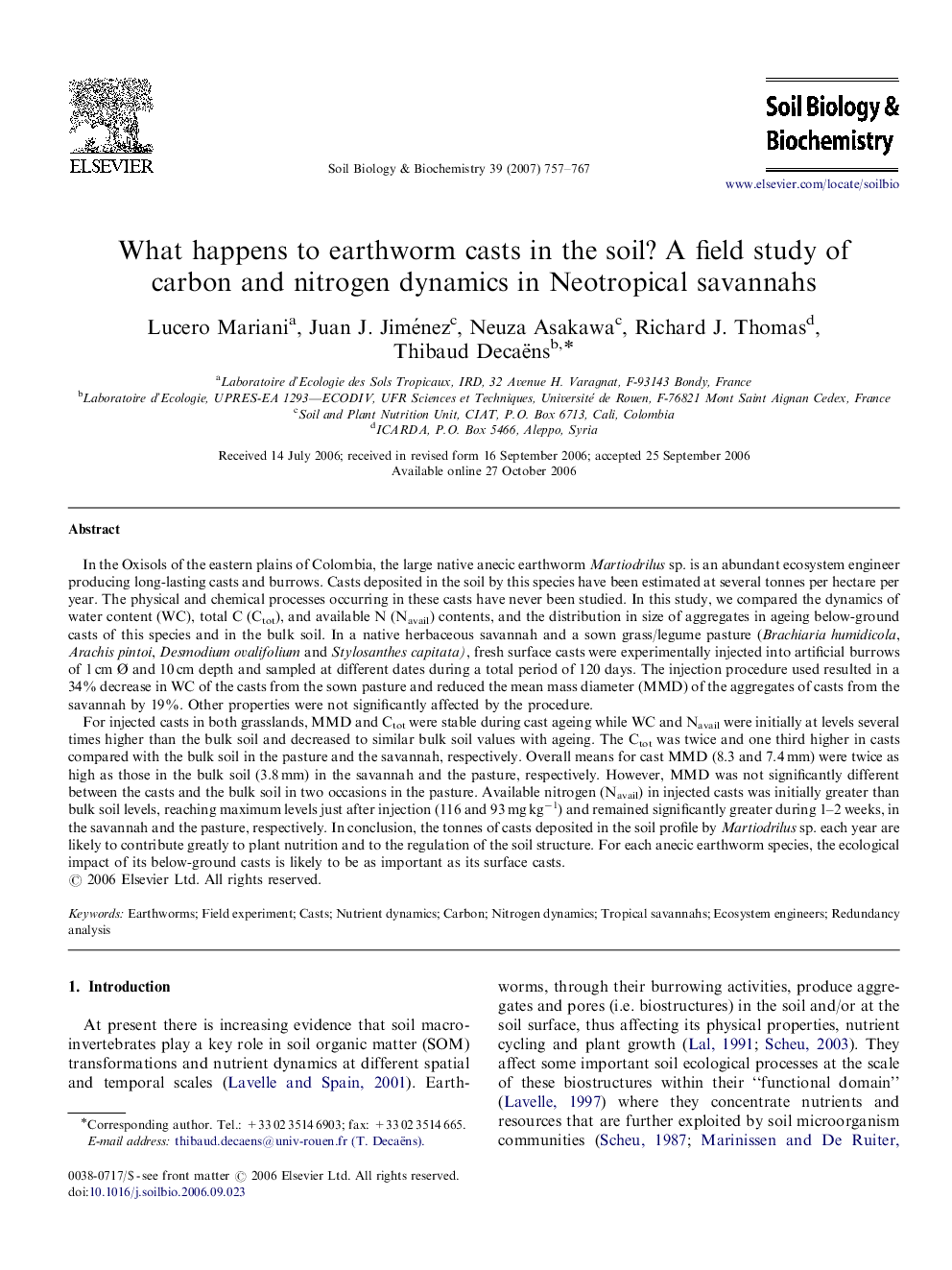| Article ID | Journal | Published Year | Pages | File Type |
|---|---|---|---|---|
| 2025733 | Soil Biology and Biochemistry | 2007 | 11 Pages |
In the Oxisols of the eastern plains of Colombia, the large native anecic earthworm Martiodrilus sp. is an abundant ecosystem engineer producing long-lasting casts and burrows. Casts deposited in the soil by this species have been estimated at several tonnes per hectare per year. The physical and chemical processes occurring in these casts have never been studied. In this study, we compared the dynamics of water content (WC), total C (Ctot), and available N (Navail) contents, and the distribution in size of aggregates in ageing below-ground casts of this species and in the bulk soil. In a native herbaceous savannah and a sown grass/legume pasture (Brachiaria humidicola, Arachis pintoi, Desmodium ovalifolium and Stylosanthes capitata), fresh surface casts were experimentally injected into artificial burrows of 1 cm Ø and 10 cm depth and sampled at different dates during a total period of 120 days. The injection procedure used resulted in a 34% decrease in WC of the casts from the sown pasture and reduced the mean mass diameter (MMD) of the aggregates of casts from the savannah by 19%. Other properties were not significantly affected by the procedure.For injected casts in both grasslands, MMD and Ctot were stable during cast ageing while WC and Navail were initially at levels several times higher than the bulk soil and decreased to similar bulk soil values with ageing. The Ctot was twice and one third higher in casts compared with the bulk soil in the pasture and the savannah, respectively. Overall means for cast MMD (8.3 and 7.4 mm) were twice as high as those in the bulk soil (3.8 mm) in the savannah and the pasture, respectively. However, MMD was not significantly different between the casts and the bulk soil in two occasions in the pasture. Available nitrogen (Navail) in injected casts was initially greater than bulk soil levels, reaching maximum levels just after injection (116 and 93 mg kg−1) and remained significantly greater during 1–2 weeks, in the savannah and the pasture, respectively. In conclusion, the tonnes of casts deposited in the soil profile by Martiodrilus sp. each year are likely to contribute greatly to plant nutrition and to the regulation of the soil structure. For each anecic earthworm species, the ecological impact of its below-ground casts is likely to be as important as its surface casts.
